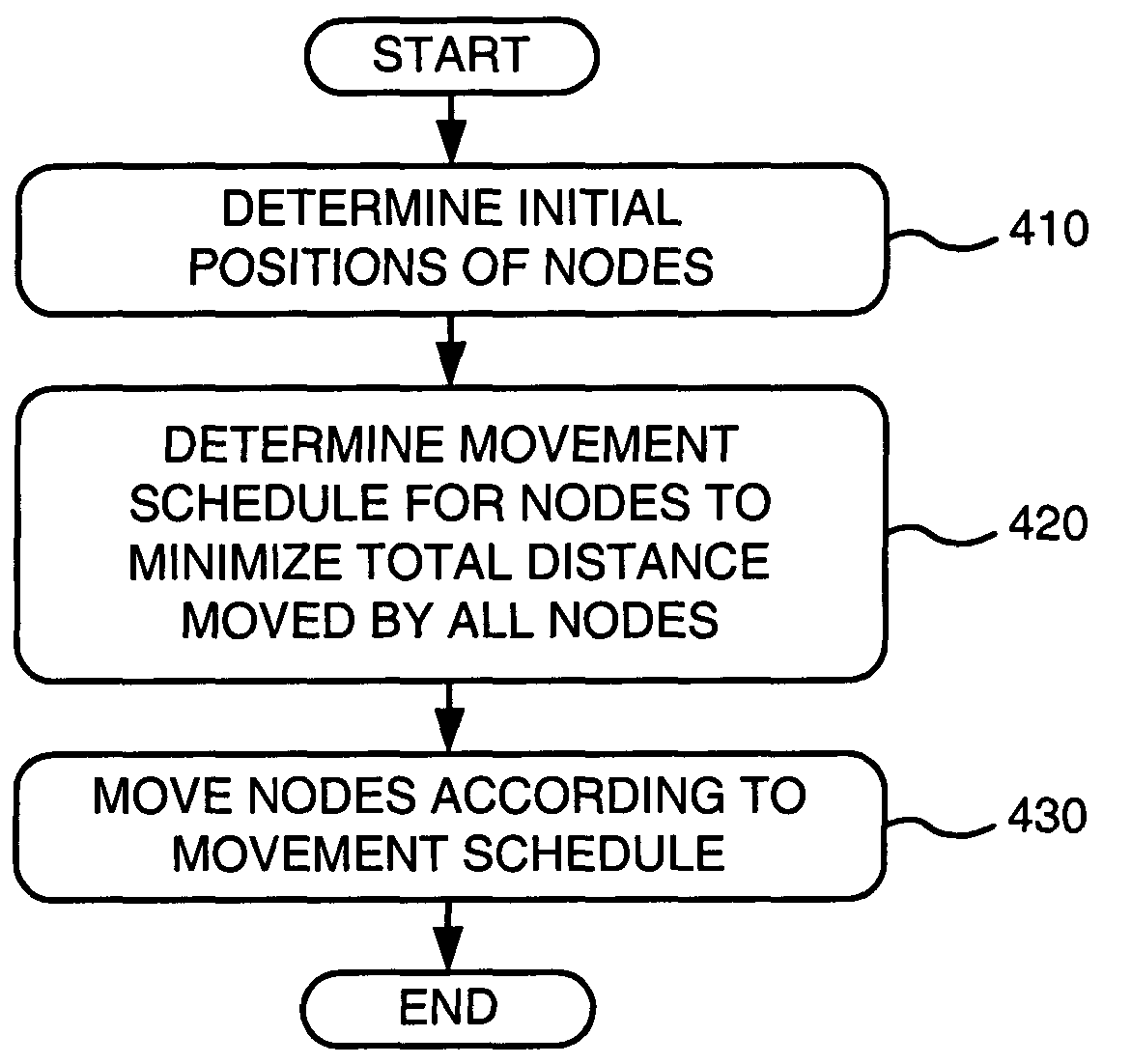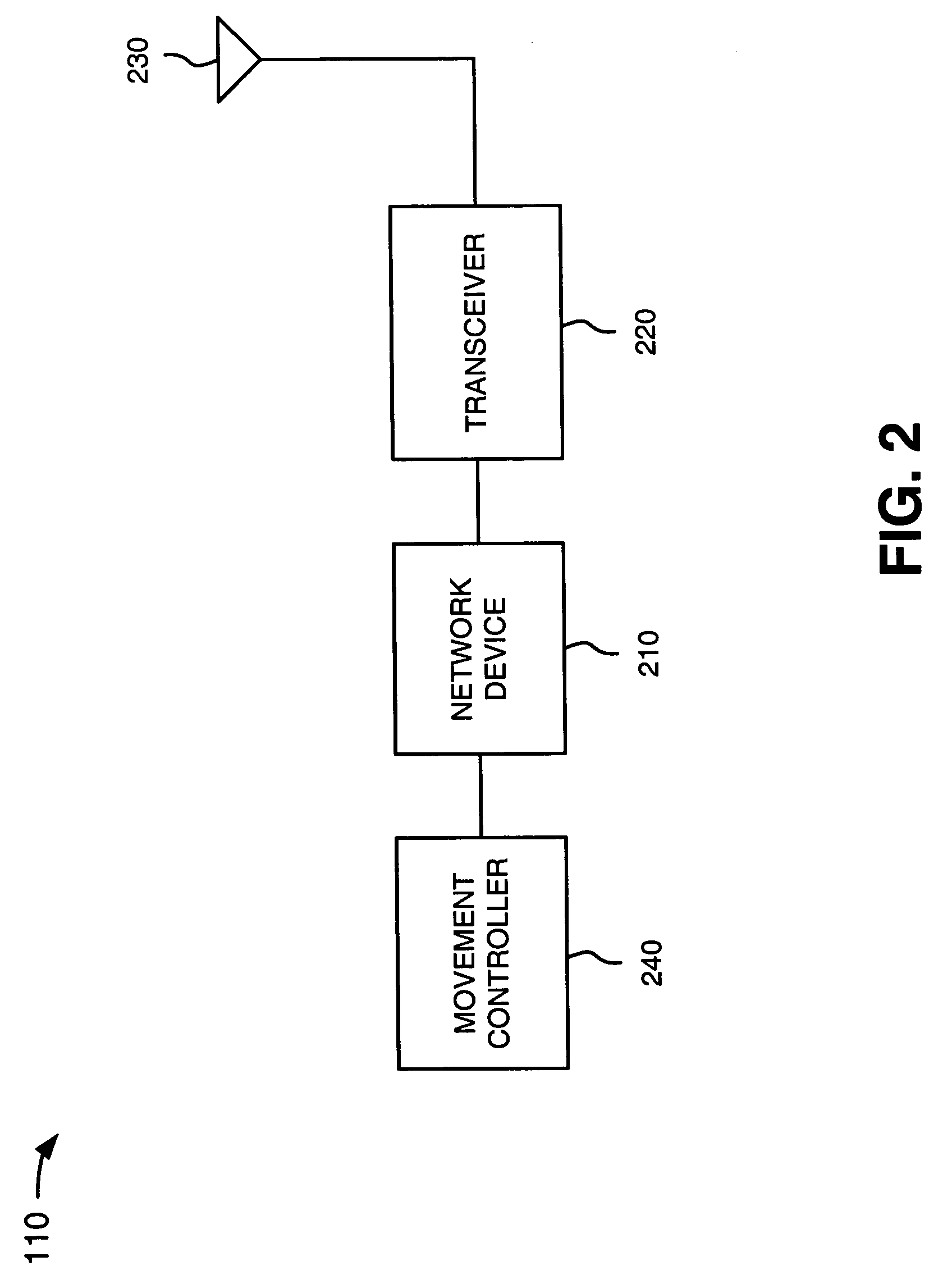Systems and methods for automatically placing nodes in an ad hoc network
- Summary
- Abstract
- Description
- Claims
- Application Information
AI Technical Summary
Benefits of technology
Problems solved by technology
Method used
Image
Examples
Embodiment Construction
[0038] The following detailed description of the invention refers to the accompanying drawings. The same reference numbers in different drawings may identify the same or similar elements. Also, the following detailed description does not limit the invention. Instead, the scope of the invention is defined by the appended claims and equivalents.
[0039] Autonomous and semi-autonomous mobile multi-robot systems require a wireless communication network in order to communicate with each other and collaboratively accomplish a given task. A multihop communications network that is self-forming, self-healing and self-organizing is well suited for such mobile robotic systems that exist in unpredictable and constantly changing environments. Because every node in a multihop (or ad hoc) network is responsible for forwarding packets to other nodes, however, the failure of a critical node can result in a network partition. Hence, it may be beneficial to have an ad hoc network configuration that can...
PUM
 Login to View More
Login to View More Abstract
Description
Claims
Application Information
 Login to View More
Login to View More - R&D
- Intellectual Property
- Life Sciences
- Materials
- Tech Scout
- Unparalleled Data Quality
- Higher Quality Content
- 60% Fewer Hallucinations
Browse by: Latest US Patents, China's latest patents, Technical Efficacy Thesaurus, Application Domain, Technology Topic, Popular Technical Reports.
© 2025 PatSnap. All rights reserved.Legal|Privacy policy|Modern Slavery Act Transparency Statement|Sitemap|About US| Contact US: help@patsnap.com



